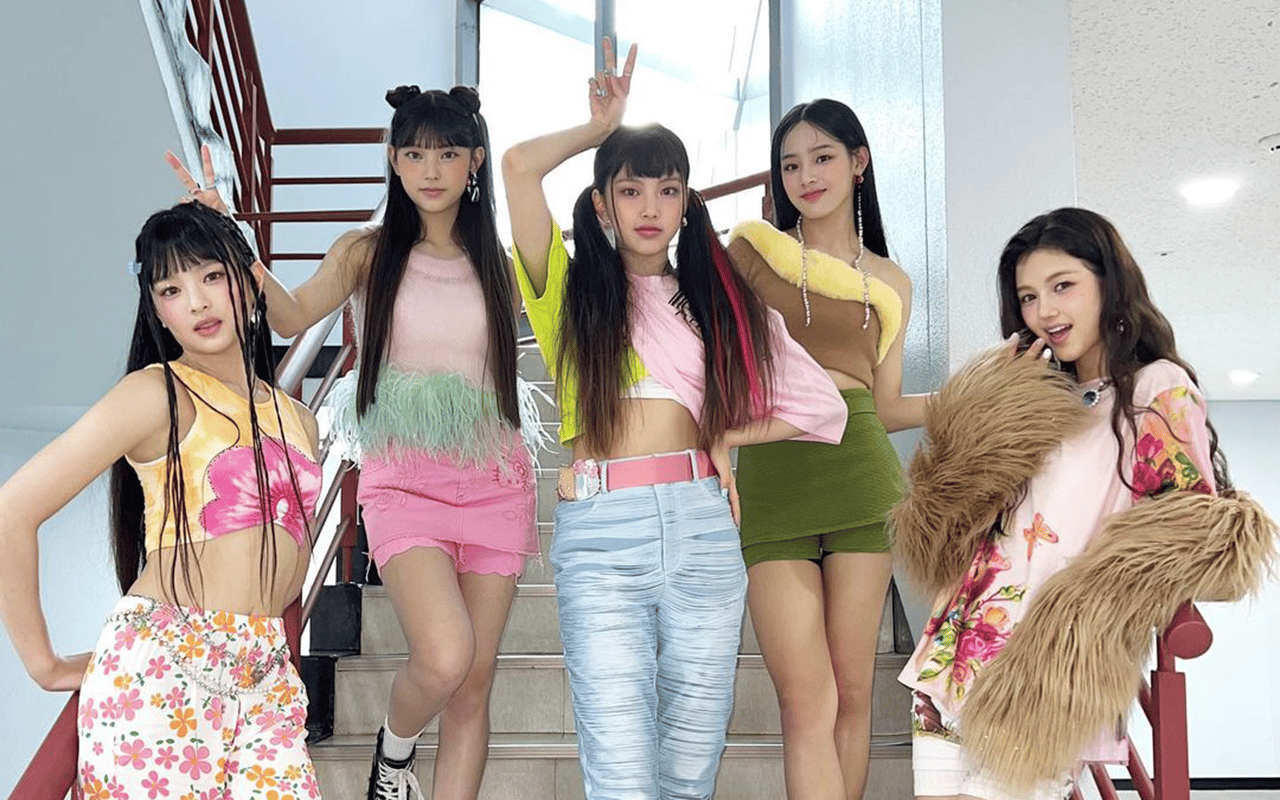
For decades, beauty standards around the world have prioritised youthfulness—but K-Pop’s newest export takes this focus to a whole new level.
The South Korean girl group, NewJeans, has been making waves since their recent debut— endearing themselves to K-Pop fans around the world while also raising eyebrows at the group’s average age of just 16.
Who are NewJeans?
Meet Minji (18), Hanni (recently 18), Danielle (17), Haerin (16) and Hyein (wait for it… 14).
Having released just four songs since their debut on August 1st, the group has already gained over 62 million subscribers on YouTube and over 2 million followers on TikTok. Breaking away from the overproduced, cookie-cutter style of other K-Pop groups, NewJeans caught the attention of the international fandom for their unique style that can only be described as youthful.
Visually, the group members are styled with long, school girl-like hair, natural makeup, and dressed from head to toe in a revival Y2K aesthetic, clearly aligning themselves with the trends of Gen Z.
Debuting under the production label ADOR – a subsidiary of the same parent company that manages BTS, NewJeans is also one of the first K-Pop groups to rely on TikTok as a major platform to promote their launch. The group actively shared dance practice videos and messages to their growing fanbase during the countdown to their EP release in August.
Why are fans concerned for the NewJeans idols?
Given the group’s ties to Gen Z culture, it makes sense that NewJeans has quickly found a home and a fanbase on TikTok. But as we know, success on the app comes with its downsides, and many K-Pop fans have taken issue with the ages of the group members as most of the girls still being underage.
Considering that K-Pop idols are also typically “trained” by their production labels for an average of two to four years before they debut, this timeline has raised further questions surrounding the ethics of debuting such a young group.
Training to become an idol is known to be a grueling process. Children as young as 12-years-old move away from home to train day after day in music and dance, with the chance of being cut from the program at any moment. This schedule, combined with the pressure of being separated from their families to live in dorms with fellow K-Pop hopefuls, puts young trainees at risk of severe physical and emotional stress.
Fans have also shown concern over the young members being sexualised, both by obsessive fans and the managers and producers who have control over the direction of their careers. While their debut style and concept is not overtly sexual, some have criticised NewJeans’ production company for styling the youngest member, Hyein, to look much older than she is.
Interestingly, the members of NewJeans are not the youngest K-Pop idols to ever debut, but it’s the fandom’s reaction that is truly unprecedented.
Since their debut, fans have commented things like “I just can’t stan a 14 year old” and “very sus of any adult who has posters of children on their walls”.
Others have put the blame on their production label for debuting the group at their current age, leaving comments like “literally they need a new rule, no idols under 18,” and “literal child labour. it wouldn’t kill ADOR to debut this group when they’re older. its horrific”.
K-Pop culture puts great emphasis on youth
The music industry is exploitative— we already know that. But the significance of this reaction lies in the fact that K-Pop fan culture has never really had a problem with young idols. From the inception of K-Pop in the 90s, female entertainers in particular have been praised for their youthful appearance and are more or less forgotten by the time they reach their 30s. Within K-Pop folklore, there are talks of the “seven year curse”, meaning that most groups disband after seven years. As a result, most girl groups do not remain active into their 30s.
The iconic group, Girls Generation, for example recently made a special comeback to celebrate their 15th anniversary after a five year hiatus, yet the average age of the group’s eight members is only 33-years-old.
Furthermore, “cuteness” as a currency is heavily ingrained in K-Pop culture. Almost all K-Pop girl groups are styled with the school girl look at some point in their career, whether in music videos or live performances. In fact, the high school aesthetic is so popular in Korean pop culture that a variety show exists called Knowing Bros, set in a classroom where K-Pop idols are invited as guests to be interviewed and perform challenges while dressed in school uniforms.
Youth in general is also emphasised within K-Pop and Korean culture, with the term maknae, meaning “youngest” assigned to the youngest member of a group. The maknae of a group is often babied by the other group members, and may be treated differently by fans and even the media.
What has changed within the K-Pop fandom?
As we’ve seen, the emphasis on youth in K-Pop seems to stem from certain Korean cultural norms. And for the many years that K-Pop was predominantly enjoyed by Korean audiences, these norms reamined undisputed. But with groups like Blackpink and BTS taking over the Western music scene, K-Pop has officially entered mainstream pop culture over the last few years— opening the genre up to new audiences while also facing new criticisms.
As the international K-Pop fanbase grows, it only makes sense that the culture within these fandoms will evolve to suit global expectations. While NewJeans will likely continue to find great success, the discourse around their ages and what is deemed acceptable in the eyes of K-Pop fans is evidently beginning to shift.
Anyways, stan NewJeans (in 2026).

